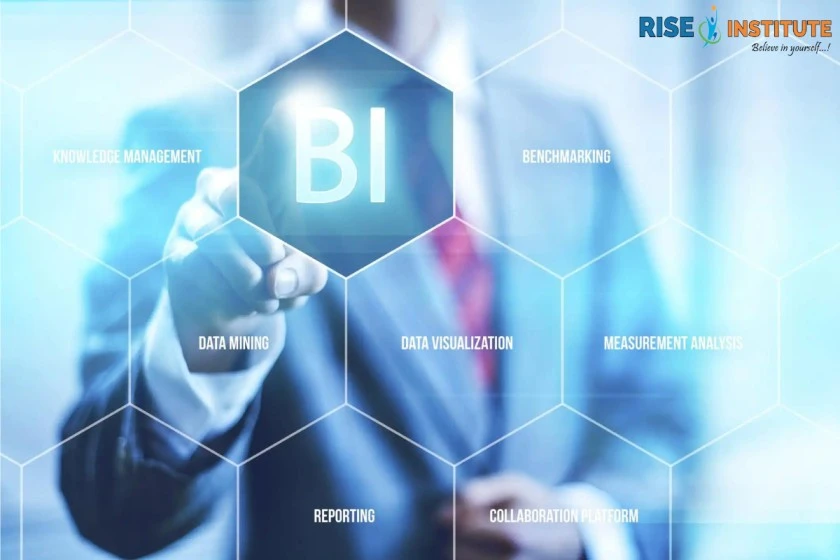Introduction
Fundamentals of Business intelligence, Business intelligence (BI) has become a key enabler of competitive success, especially in the digital age. It helps organizations to gain valuable insights from data and make better decisions, which can lead to improved productivity and profitability.
However, BI solutions are complex and expensive to implement. They also require a dedicated team to manage them, which is why most companies still rely on manual reporting tools.
In this post, I will introduce you to one of the best free BI tools out there – Minimum Viable BI (MVB). MVB is a web-based open-source project that allows you to create your own business intelligence (BI) tool in no time at all. Using MVB’s drag-and-drop visual editor, you can quickly build reports, dashboards, charts and share them via social media channels like Facebook, Twitter or LinkedIn.
What is BI? Business Intelligence Dashboards, Visualizations and Analytics Software
BI (Business Intelligence) is a term that refers to applications that provide the ability for organizations to view and analyses data. The goal of BI is to help an organization make better decisions by providing them with insight into their business. BI software can be divided into two main categories: dashboards, which are graphical representations or visualizations of data; and analytics, which involves using data to make predictions or change decisions.
Dashboards: A dashboard is a kind of report that displays information in a way that allows users to quickly identify trends and patterns in different areas of the business. For example, if a company has sales goals based on sales volume, it might create a dashboard showing how many units each store sold this week compared with last week. Dashboards are often used to present information in an easy-to-read format that users can understand without having to spend time digging through reports.
Visualizations: Visualizations are another type of report that uses graphics and charts to show various pieces of data related to an organization’s performance. For example, if a company wants to know how many widgets were produced from each department or plant over the past month, it can use visualization software to create graphs showing each department’s output
Why Do You Need BI?
The answer to this question is: because it helps you make more money.
If you’re a business owner, you have a lot of responsibilities — and time spent on these responsibilities is time not spent on your business.
How can you make sure that the work that you do is helping your business? You can’t really do much about what comes down the pipeline, but at least with BI, you can see what’s coming up.
Business intelligence software allows you to create customized dashboards that show key performance indicators (KPIs) in real time. You can view KPIs on a single screen, which can help you monitor your team’s performance easily. It also allows you to visualize data in a way that provides a clear picture of what it means for your business.
Benefits of BI Data Management and Governance
The benefits of BI Data Management and Governance are many. From providing a central repository for all data to be used in reports, to allowing for the creation of dashboards that can be viewed live, BI Data Management and Governance solutions provide the ability to make information more accessible to business users. This allows them to get the most out of their data by making it easier for them to understand and use it.
Having access to all of your data is also important when it comes to reporting on trends or changes in performance. For example, if you have a sales team in your company that deals with a particular product line and you have no idea how well they are doing compared with other departments, having access to all of this information would allow you to see where there might be gaps in performance or areas for improvement.
Another benefit of BI Data Management is being able to track changes over time. For example, if there is an issue with a particular product that has been sold in large quantities over time but has recently become more popular because of new features or increased demand, tracking this change will allow you to see if there are any patterns that could help predict future sales trends or identify potential issues before they occur
The Importance of BI to Your Business
BI is the cornerstone of any business. It helps you make better decisions, gain a competitive edge and manage your customer relationships. But BI infrastructure has been slow to evolve, which has held businesses back from taking full advantage of its potential.
The Minimum Viable Business Intelligence (BI) Software Platforms are designed to transform the way that companies use data to manage their operations, streamline processes and achieve real results.
These tools allow you to harness the power of big data without spending more money on hardware or software than needed. They also allow you to access data in real-time so that you can make decisions faster than ever before.
The Three Key Elements of BI

Minimum Viable Business Intelligence (BI) software is a term used to describe a set of core components that can be used to implement your first BI system. The three key elements are:
- A data source – this could be any number of sources, such as ERP, CRM, file shares or even Excel spreadsheets.
- A warehouse – this is where your data is stored and manipulated before being brought back into your current BI system or used to create new reports and dashboards.
- A visualization tool – this is where you will create visualizations using the data available in your warehouse and finally get to see what that data looks like when presented in an attractive way.
BI for Small Businesses and Start-ups
Small businesses and start-ups often have limited resources, but they also want to be able to do more with their data. The minimum viable business intelligence (BI) software is a great solution for this need.
The minimum viable business intelligence (BI) software enables small businesses and start-ups to take advantage of all the advantages of data analysis. BI can help you make important decisions about your company’s operations, improve customer engagement and drive revenues through better marketing campaigns.
This article will show you what bare-bones business intelligence software can do for your company.
Like any other software, business intelligence software has its pros and cons. The main benefit of using a BI tool is that it will help you make better decisions regarding your business. You can access all of your data in one place, which makes it easier to analyses and understand.
Bare-bones BI tools are ideal for small businesses with limited resources and simple needs. They do not come with a lot of bells and whistles, so they won’t be able to do everything that larger enterprise solutions can. However, these tools will allow you to get started quickly and easily without having to spend a lot of money on the infrastructure required to run a more advanced solution.






